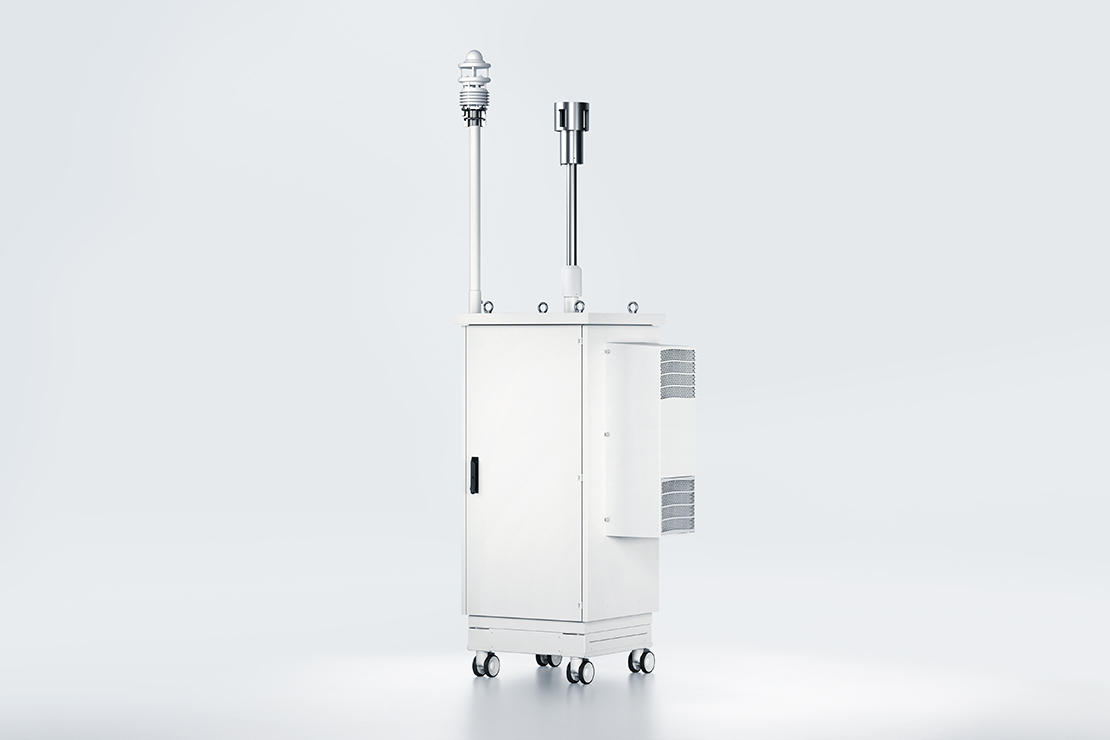
GRIMM studies the climate factor clouds
What role do clouds play in climate change? Since January 2020, an international research team has been working on this question as part of the large-scale field study EUREC4A. The influence of aerosols is also researched – with technology from GRIMM, the aerosol measurement specialist in the DURAG GROUP.
At a glance
| Industry: Science and research Study: EUREC4A Responsible for the study: Max Planck Institute for Meteorology, Laboratoire de Météorologie Dynamique (Paris) Application: Environmental dust monitoring in outdoor areas, atmospheric monitoring, continuous nanoparticle counting Products: EDM 665, EDM 180, 5420, 5421 |
International research project to enable better climate predictions
The study is led by the Max Planck Institute for Meteorology and the Laboratoire de Météorologie Dynamique in Paris. According to the Max Planck Institute, "EUREC4A aims at advancing understanding of the interplay between clouds, convection and circulation and their role in climate change." The research institute speaks of "the largest field campaign to study shallow clouds and their interplay with the atmosphere and ocean."1
More than 40 partners from nine countries are involved in EUREC4A. The measurement campaign, which started on the Caribbean island of Barbados, will last just under six weeks. The effort is enormous: the research inventory includes five aircraft and four research vessels as well as satellites, balloon kites and autonomous missiles.2
EDM 665 from GRIMM records large measuring range
One of the research vessels is the German METEOR. On board: An EDM 665 Wide Range Aerosol Spectrometer from GRIMM. The EDM 665 records the particle count distribution from 5 nanometers to 32 micrometers. Once installed, the device operates autonomously for four weeks without the need for maintenance and sends the measured values online to the scientists. Essentially, the system consists of an air-conditioned, weather-protected outdoor housing and the internal measuring devices: a spectrometer EDM 180 (for a particle size range from 0.25 to 32 micrometers), an SMPS+C Model 5420 (for a particle size range from 5 to 350 nanometers) and a CPC Model 5421 for verification of the measured data.
Responsible for the installation on site was Sebastian Steinau, Service Specialist of the GRIMM nano department. "After all devices were loaded onto the deck by container crane, the assembly of the hardware could begin. The commissioning proved to be quite adventurous due to sudden heavy rainfall, but was successfully completed late in the evening, so that a first test run could be carried out overnight. Already on the first day the system delivered plausible and very interesting measured values which could be traced back to the surrounding shipping and loading cranes", reports Sebastian Steinau.
Aerosol data are important for climate research
Not only the particles themselves play a role in the measured data of the EDM 665, but also weather data such as temperature, wind speed and air pressure which prevail during the measurement. "Together with the meteorological data, the EDM 665 provides highly interesting information on the physical properties of the aerosol. These data are of great importance for climate research, as they help to better understand cloud formation and transport processes in the atmosphere," explains Friedhelm Schneider, Product Manager at GRIMM.
To understand the idea behind a huge project like EUREC4A, you have to talk about climate models. There are complex models that predict that global warming, especially in the tropics, will cause fewer clouds to form in the future. Fewer clouds mean more heating of surfaces, which in turn increases climate change – this is the hypothesis. But there are other models that predict exactly the opposite. There is also great uncertainty about the extent of the expected feedback effects. The field study should therefore ultimately contribute to the development of robust climate models and thus enable more reliable climate predictions.2
References:
1 Max-Planck-Institut: https://mpimet.mpg.de/en/communication/focus-on/eurec4a-an-international-field-study-to-test-hypothesized-cloud-controlling-factors-influencing-weather-and-climate
2 Max-Planck-Institut: https://www.mpg.de/14371836/eurec4a-wolken-klimawandel



